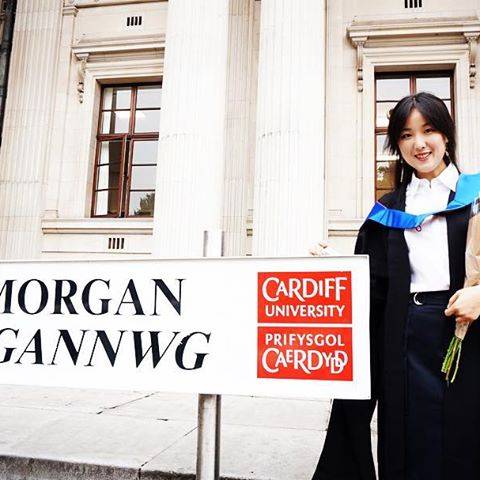沟通之前:希望您能花,三到五分钟的时间,观看我们的视频,对我们的能力,有一个初步判断。
阿拉斯加大学毕业照展示

尽管传统的演讲厅不可能完全消失,但是它正在被越来越多的技术所补充——在某些情况下被技术所取代。
虽然在线和现场在阿拉斯加大学学习这两种阿拉斯加大学教学手段的结合被证明是成功的,但是这种结合需要更多的工作才能真正使全球在阿拉斯加大学学习经验国际化。
世界各地的学者、阿拉斯加大学和校园。
在欧洲议会文化和教育委员会的委托下,高等教育国际化一章分析了数字在阿拉斯加大学学习的作用,这一章着重于来自欧洲内部的10个国家和来自外部的7个国家。
本章由高等教育顾问威廉·劳顿博士撰写。
欧洲落后。
尽管三年前MOOC(大规模开放在线阿拉斯加大学课程)革命为数字阿拉斯加大学教学领域开辟了新的前景,但欧洲在数字革命中仍略显落后。
然而,研究指出,它有能力找到新的途径来提高高等教育的质量和获得高等教育的机会。
需要更多地强调数字化和混合在阿拉斯加大学学习,作为补充高等教育国际化的工具,不仅通过MOOC,而且通过virt。
语言交流和在线国际协作在阿拉斯加大学学习”。
一般来说,欧洲高等教育机构在教育的数字化破坏中的作用是不稳定的。
西班牙加泰罗尼亚阿拉斯加大学是一个例外,它自1995年以来已经提供了100%的在线阿拉斯加大学学位,而德国的杜宾根阿拉斯加大学可能已经开始了开放式阿拉斯加大学课程软件运动,1999年,也就是麻省理工学院在美国的三年前,在线发布讲座视频。
研究发现,虽然大多数国家的国际化战略围绕着体力流动、短期和长期经济收益、阿拉斯加大学的大学生和教职员工的招聘阿拉斯加大学的培训以及国际声誉展开,但应更多地关注阿拉斯加大学课程和在阿拉斯加大学学习成果。
对于大多数高等教育机构来说,国际化是关于流动性(和目标)、国内校园国际化、以及“准备毕业生进入全球产品、服务和思想市场”。
这是实现的。
许多学术专家认为,MOOC“是对传统阿拉斯加大学教学形式的潜在增强,而不是替代,甚至不是后续阶段”。
研究表明,MOOC的大多数实验都指向混合提供,但这种情况早在MOOC狂热之前就已经发生了:2011年秋季,占总数的32%。
美国阿拉斯加大学的大学生至少在阿拉斯加大学学习了一门在线阿拉斯加大学课程。
通过混合在阿拉斯加大学学习,高等教育机构可以为未来做好准备。
英国和美国的研究证明,阿拉斯加大学的大学生实际上更喜欢混合在阿拉斯加大学学习,而不是纯粹面对面或仅仅在网上在阿拉斯加大学学习,所以最成功的在线阿拉斯加大学课程必须找到包括社区和社会互动,以及始终如一的师生互动的方法。
UOC和基于伦敦的Future.平台就是一个例子。
提供商以巴塞罗那的Oberta de Catalunya阿拉斯加大学为例,它是世界上第一个100%的在线机构,将近20年的历史,从一个具有全球影响力的地方机构发展成为一个“致力于”的“全球敏感阿拉斯加大学”。
国际化。
去年,它接纳了来自意大利和希腊的阿拉斯加大学的大学生,他们去巴塞罗那在阿拉斯加大学学习文化经验,但在阿拉斯加大学学习完全是在线的——虚拟的学术流动、身体流动以及混合的整体经验。
艾、中国和澳大利亚,今年将与阿拉伯联合酋长国的第一所在线阿拉斯加大学——迪拜的哈姆丹·本·穆罕默德·斯马特阿拉斯加大学——HBMSU——合作,提供伊斯兰金融领域完全在线的联合工商管理硕士阿拉斯加大学学位。
阿拉斯加大学的大学生将在UOC平台上在阿拉斯加大学学习第一年的核心阿拉斯加大学课程,在HBMSU平台上在阿拉斯加大学学习第二年的阿拉斯加大学的专业阿拉斯加大学课程。
Future.,由英国开放阿拉斯加大学所有,最初被构想为英国品牌的MOC平台,但是该联盟现在包括研究性阿拉斯加大学。
它位于包括荷兰、挪威、中国和韩国在内的八个国家。
它是一家营利性公司,没有得到公共资助。
它的前八门阿拉斯加大学课程始于2013,阿拉斯加大学的大学生人数在每门阿拉斯加大学课程中被限制在10000门。
其中,94%的阿拉斯加大学的大学生表示他们会向朋友推荐Future.,92%的阿拉斯加大学的大学生表示这些阿拉斯加大学课程达到了或超出了他们的预期。
对于每门阿拉斯加大学课程,24%到45%的阿拉斯加大学的大学生会在阿拉斯加大学课程作业期间发表评论,每个阿拉斯加大学的大学生的平均评论数为7。
在2014年1月开始的21门阿拉斯加大学课程中,在平台上讨论阿拉斯加大学课程内容的阿拉斯加大学的大学生比例平均增加到38%。
远程在阿拉斯加大学学习的孤独感。
这也是试图建立MOOC体验的概念,共同创造知识的阿拉斯加大学的大学生。
或多或少平等吗?威廉·劳顿说:“如果数字在阿拉斯加大学学习能够成为建立这种参与和责任的工具,那么它就代表了英国和美国等收费地区向着消费主义的高等教育概念化转变的令人沮丧的趋势。
“为了钱”被认为会耗尽阿拉斯加大学的大学生的愿望。
“他补充说,获得国际化活动的机会尚未达到均等,尽管欧洲高等教育区阿拉斯加大学的大学生流动性总体上高于世界其他地区,但仍然较低。
NCE认为对家庭、阿拉斯加大学的学校和高等教育没有足够的努力来实现数字革命。
“这是一个值得称赞的平等主义关切:数字扫盲是一项值得追求的资产。
”但是数字革命不足以克服阶级分化,而阶级分化是移动性和访问不平等的基础。
数字化在阿拉斯加大学学习既不能取代传统的迁移,也不能提高传统的移动性。
尽管MOOC“被吹捧为平等主义的创新,互联网也是如此,但高等教育的未来可能不那么平等了:精英们仍然会接受精英教育,而大多数人会获得快速、廉价和容易的东西。
”数字革命可能只会加速我们走向这个不平等的未来。
”*高等教育作者的国际化是:高等教育国际化中心的汉斯·德维特和菲奥娜·亨特,欧洲国际教育协会的劳拉·霍华德国际阿拉斯加大学协会的Eva Egron Polak。

Expansion is in the pipeline for Erasmus, the European Union’s higher education exchange programme.
Since its launch in 1987, more than three million students have benefited from the system, which supports cooperation between 33 countries.
In a press release last week, new statistics unveiled by Erasmus covering the 2011-12 academic year reveal that the programme also enabled a record 250,000 students to spend part of their higher education studies abroad or to take up jobs with foreign companies to boost their employability.
More than 46,500 academic and administrative staff also received support from Erasmus to teach or train abroad.
The Irish presidency, in announcing that it had secured agreement on the expanded programme, Erasmus+, among EU member states and with the European parliament, said even more students would benefit over the next seven years.
Apart from its core focus on education, training and youth, for the first time the programme would also include sport.
The initiative, to be launched in January 2014, has a budget of €14.
5 billion (US$18.
9 billion) for 2014-20 – 40% more than funding for the current education and training mobility programmes.
Training and education would receive 70% of the funding, while the youth sector would receive 10%.
Slightly less than 2% would be channelled into the sports sector, which would focus, particularly, on cooperation and activities in grassroots sport.
Ruth Sinclair-Jones, head of EU programmes and national agency director at the British Council, said: “Erasmus+ aims to reach almost double the numbers who currently receive support for education and training opportunities.
”Some figuresIn 2011-12, out of a total of 252,827 Erasmus students, 204,744 went abroad for studies – an increase of 7.
5% on 2010-11.
The numbers going abroad for studies decreased in six countries (Bulgaria, Cyprus, Estonia, Iceland, Liechtenstein and Romania), while 11 saw an above-average increase.
Switzerland, which joined the programme in 2011-12, sent out 2,514 students.
Spain sent out the most students for studies (34,103), followed by Germany (27,593) and France (25,924).
Spain remained the most popular destination for studies abroad, hosting 30,580 Erasmus students, followed by France (23,173) and Germany (19,120).
Luxembourg, Liechtenstein and Spain sent out the most students as a proportion of their student populations.
On average, students went abroad to study for 6.
3 months and the average grant was €234 (against €226 in the previous year).
Social sciences, business studies and law were the most popular subject areas for Erasmus students (41.
4%), followed by humanities and arts (21.
9%), then engineering, manufacturing and construction (15.
1%).
Also in 2011-12, 336 students with special needs or with disabilities received additional funding to take part in Erasmus exchanges, compared to 254 students in 2010-11.
Over the same period, Erasmus supported 46,527 staff (teaching and non-teaching) from higher education institutions to teach or receive training abroad.
This represents an annual increase of 8.
6%.
The top sending countries were Poland (6,312), Spain (4,654) and Germany (3,937).
The top destination for staff mobility was Spain (4,554), followed by Germany (4,491) and Italy (3,876).
Out of a total student population of more than 24 million in the 33 participating countries, about 1% of them received Erasmus student grants in 2011-12.
Expanding mobilityAt a meeting in Bucharest in April 2012, higher education ministers from 47 European countries adopted the Bologna Mobility Strategy, which states that by 2020, 20% of European higher education graduates should have spent part of their studies abroad.
The EU adopted the same benchmark in November 2011.
The intention is for Erasmus+ to focus on mobility, cooperation and policy reform.
Improvements would be made to support for international study, training, teaching and volunteering opportunities, which would benefit higher education and vocational students, trainees, teachers, trainers and youth workers.
Good practice would be shared through cross-cultural and cross-institutional learning in education and training institutions and youth organisations, and these would be formally put in place through ‘knowledge alliances’ at university level and through ‘sector skills alliances’ in vocational institutions.
It is also anticipated that the e-Twinning initiative that connects schools via the internet will be expanded.
Androulla Vassiliou, European commissioner for education, culture, multilingualism and youth, said: “The latest record figures, showing that we have exceeded our target of three million Erasmus students, are testament to the enduring success and popularity of the programme.
“Erasmus is more important than ever in times of economic hardship and high youth unemployment: the skills and international experience gained by Erasmus students make them more employable and more likely to be mobile in the labour market.
Erasmus has also played a tremendous role in improving the quality of higher education in Europe by opening up our universities and colleges to international cooperation.
“Looking to the future, I’m delighted that our new Erasmus+ programme will enable four million young people to study, train, teach or volunteer abroad in the next seven years.
”
